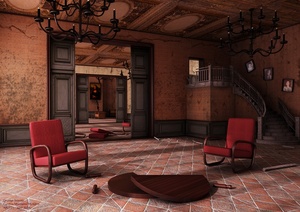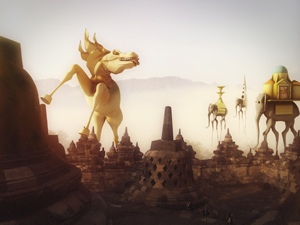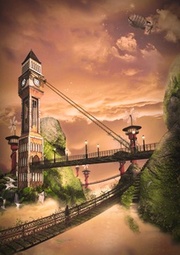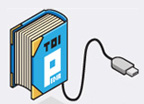AR0771
- AR0771 - Course Program and Grading
- AR0771 - Downloads
- AR0771 - Repository
- AR0771 - Checklist Renderfarm
- AR0771 - Handing in Q3
In the AR0771 course we focus on the techniques and methods used to generate a single high quality A1 size image that goes beyond the traditional visualizations you get 'out of the box' from most 3D modelling and rendering software. The image will visualize the true character and meaning of a building or architectural design. Using this as a starting point for the process, thinking about the essence of what it is you want to show, you learn to step beyond the direct visualization.
This course will give you the tools you need to make more complex, advanced and meaningful visualizations. You'll be using Maya and Photoshop to achive this goal.
One of the reasons to create this course is to give students the opportunity to research effective and interesting ways to visualize and communicate a design. During design studio's, there's often limited time for this and the pressure is high to get a presentable result. So there is little room for experimentation to find new and interesting ways to achieve this goal. With very limited room for failure, risks are mostly avoided, leading to trusted, standard presentations lacking character. As with most crafts, it takes practice to get beyond a basic level and you have to take risks, especially at the beginning. During this course you don't have to worry about a design-studio project and there is room and support to experiment (and fail).
During this course you learn to use advanced Maya and Photoshop techniques in support of generating the A1
image. The Maya part focusses on the visualization capabilities with a
emphasis on composition, smart modelling, lighting, rendering and the use of advanced materialization.
Photoshop is used to support the creation of complex textures and for the effective use of photo compositing of real live and
computer generated images. The combination of both software packages supports the creation of a wide
range of visual styles to explore.
Course content
You'll create one image of a situation in an architectural context. This situation is based on an existing building or your own finished design. Representing an atmosphere in the image is very important.
During the course you learn to use different techniques to create the correct ambiance for this single image with the help of Maya and Photoshop.
We start with the basics in Maya after which we'll cover advanced modelling techniques, texturing, advanced lighting, and rendering.
The resulting render from Maya will be post-processed in Photoshop and we'll discuss options to realise parts of the image in either your rendering or in post-processing.
Recommended Reading
We recommend reading Drawing Scenery: Landscapes and Seascapes by Jack Hamm. Being written in 1972 it still gives good insight on how to fill your "frame" using the rules of composition.
It is available at The Book Depository (free shipping) and Amazon




